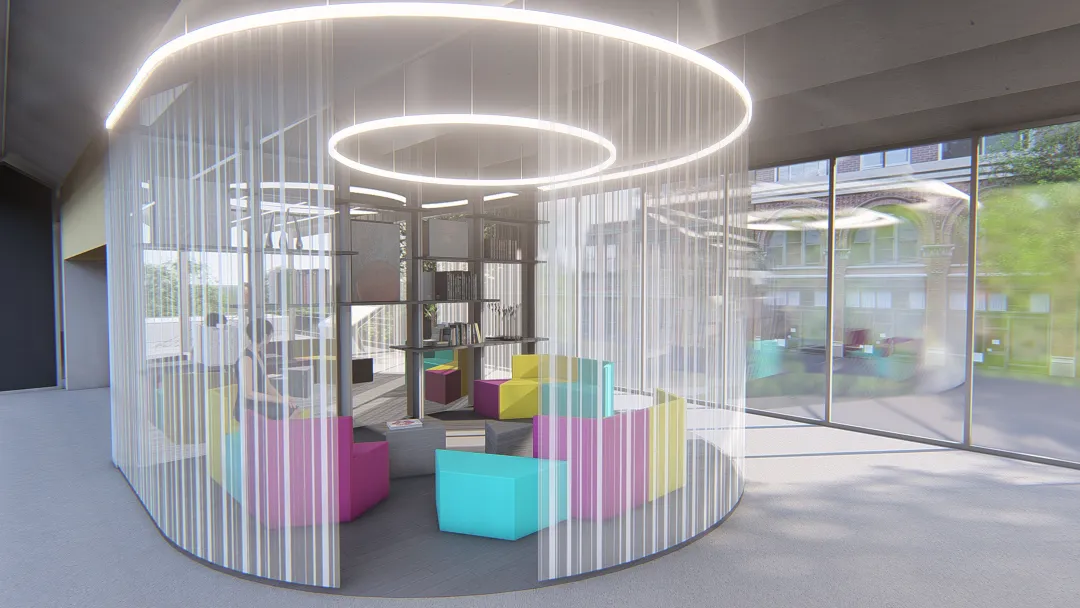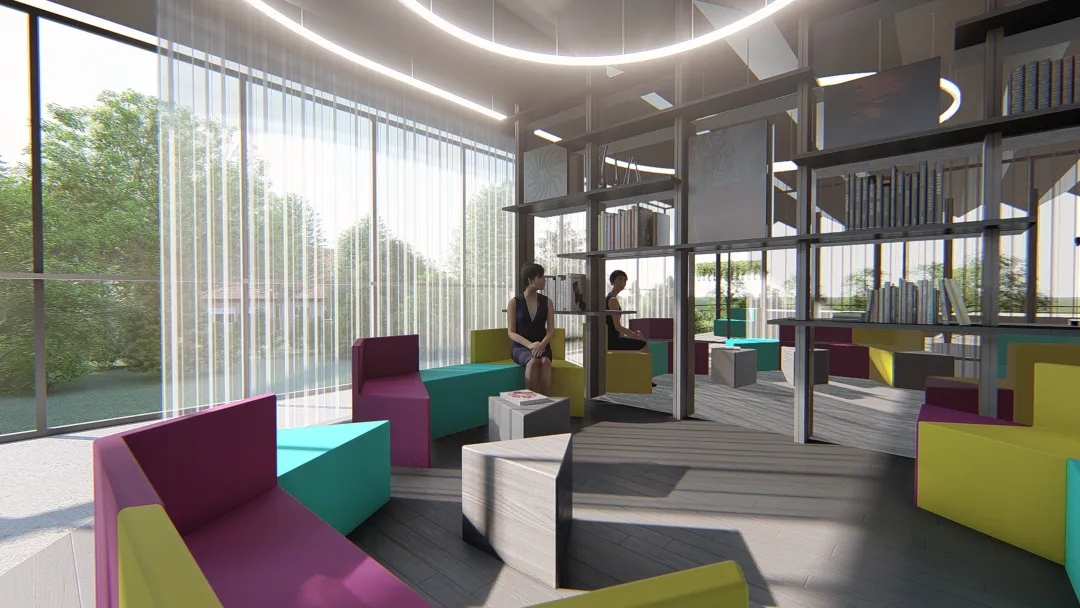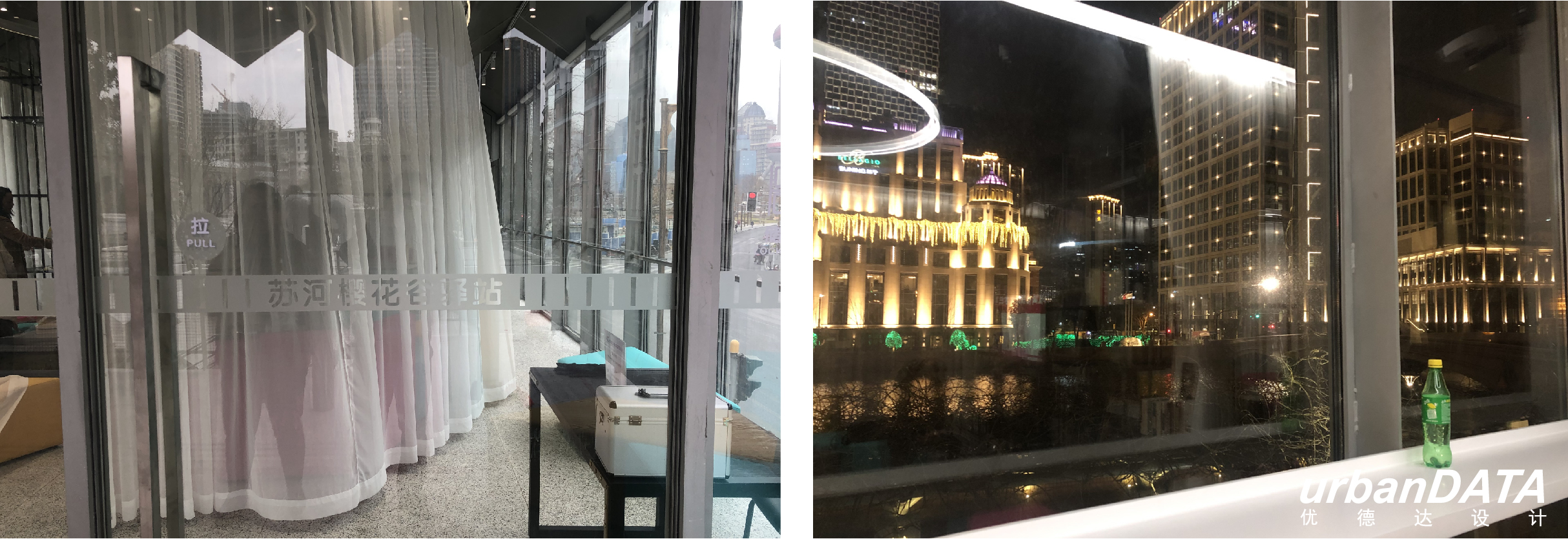Project Name: Suhe Sakura Valley Station Adaptive Reuse
Project Type: Functional Planning | Interior & Soft Furnishings Design | Construction Implementation
Location: Intersection of South Suzhou Creek Road and Zhapu Road Bridge

Project Name: Suhe Sakura Valley Station Adaptive Reuse
Project Type: Functional Planning | Interior & Soft Furnishings Design | Construction Implementation
Location: Intersection of South Suzhou Creek Road and Zhapu Road Bridge

Nestled along the southern bank of Suzhou Creek near Zhapu Road Bridge, the Sakura Valley Station stood completed yet vacant since 2019. In 2020, our Urban Design team undertook the comprehensive revitalization of this dormant structure, spearheading its functional reprogramming, interior spatial design, and full implementation. Guided by principles of organic urban renewal, the transformation strategically addressed the site's original starkness through thoughtful spatial interventions that introduced a vibrant new visual anchor. By executing precisely calibrated design gestures, we achieved significant activation of the entire area - converting what was once a greyfield space into a dynamic community asset. This micro-scale urban acupuncture project demonstrates how targeted architectural solutions can breathe new life into underutilized urban infrastructure while respecting existing contexts. The station's successful metamorphosis from vacant structure to lively public node showcases the power of design to catalyze neighborhood vitality through subtle yet impactful placemaking strategies.
The Bund Subdistrict Administration envisioned reactivating this public asset to serve the area's diverse demographic ecosystem - from white-collar workers in adjacent financial towers to longtime local residents. More than just a rest stop for runners or basic municipal facility, the space was reimagined as a dynamic social hub where Shanghai's citizens and visitors could connect.
To fulfill the client's requirements, the design needed to address several key challenges:
We respond to these challenges through the following design strategies:
The design creates highly adaptable spaces that users can modify according to their needs, primarily through modular furniture systems and flexible partitions. This versatile environment accommodates diverse usage scenarios - from individual workspaces and intimate two-person settings to family gatherings, group meetings, and even pitch presentations or community events.



The design creates a fluid spatial layout that meets the needs of different scenarios by overlaying different spatial usage patterns.

This public gathering space artfully cultivates warmth within openness through its signature semicircular sliding curtains. The semi-transparent drapes delineate cozy, human-scaled niches where small groups can converse with the relaxed ease of being in their own living rooms. Just beyond the gently swaying fabric, the shimmering reflections of Suzhou Creek and the vibrant cityscape transform into ever-changing silhouettes that dance across the curtain's surface. Inside these intimate enclaves, the air carries the subtle fragrance of brewing tea and well-loved books, creating an atmosphere of quiet connection - where public space paradoxically fosters private moments.

During cherry blossom season, the space transforms into an ethereal wonderland as 3D sakura petals appear to float across the gently billowing semi-transparent curtains. This digital projection artfully merges with the real blossoms visible outside, blurring the boundaries between interior and exterior seasons. The delicate dance of light and shadow creates a multisensory spring experience - where the fragrance of tea indoors harmonizes with the imagined scent of flowers, and the whispering curtains mimic petals falling in the breeze. Visitors find themselves suspended between reality and poetry, as the space breathes in rhythm with nature's most ephemeral spectacle.
The interior design employs strategically placed vibrant furniture colors during daytime and carefully curated lighting at night, effectively breaking away from the dullness of the surrounding buildings' grey tones while enhancing the station's visual identity.

The Sakura Valley Station now serves as a vibrant community hub, combining volunteer services, tourist assistance, and worker amenities with cultural spaces like a co-working lounge and book exchange. Its activation has revitalized the neighborhood, attracting a 78% increase in visitors and spurring weekend book markets, while demonstrating strong community engagement with 63% repeat users.